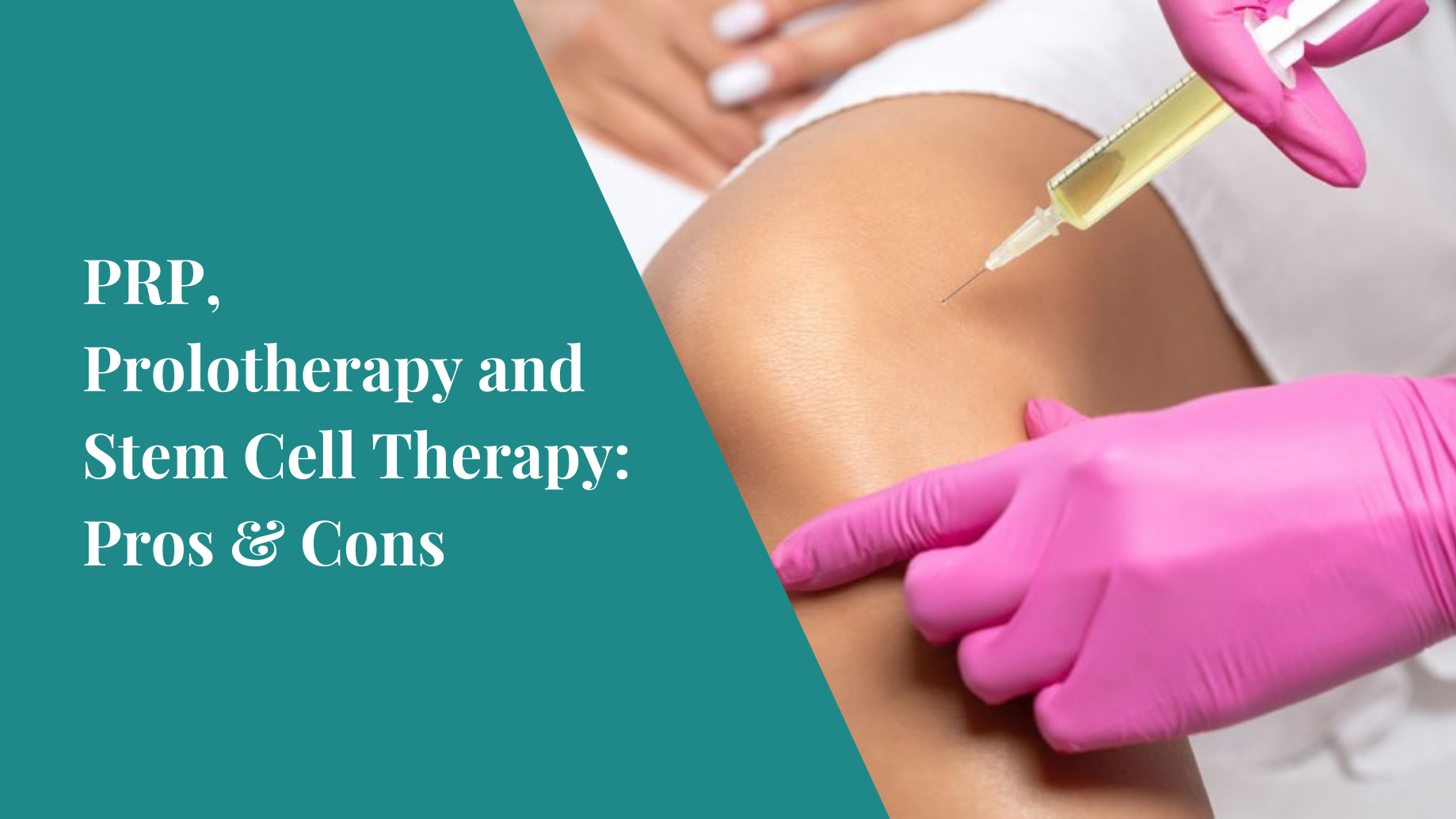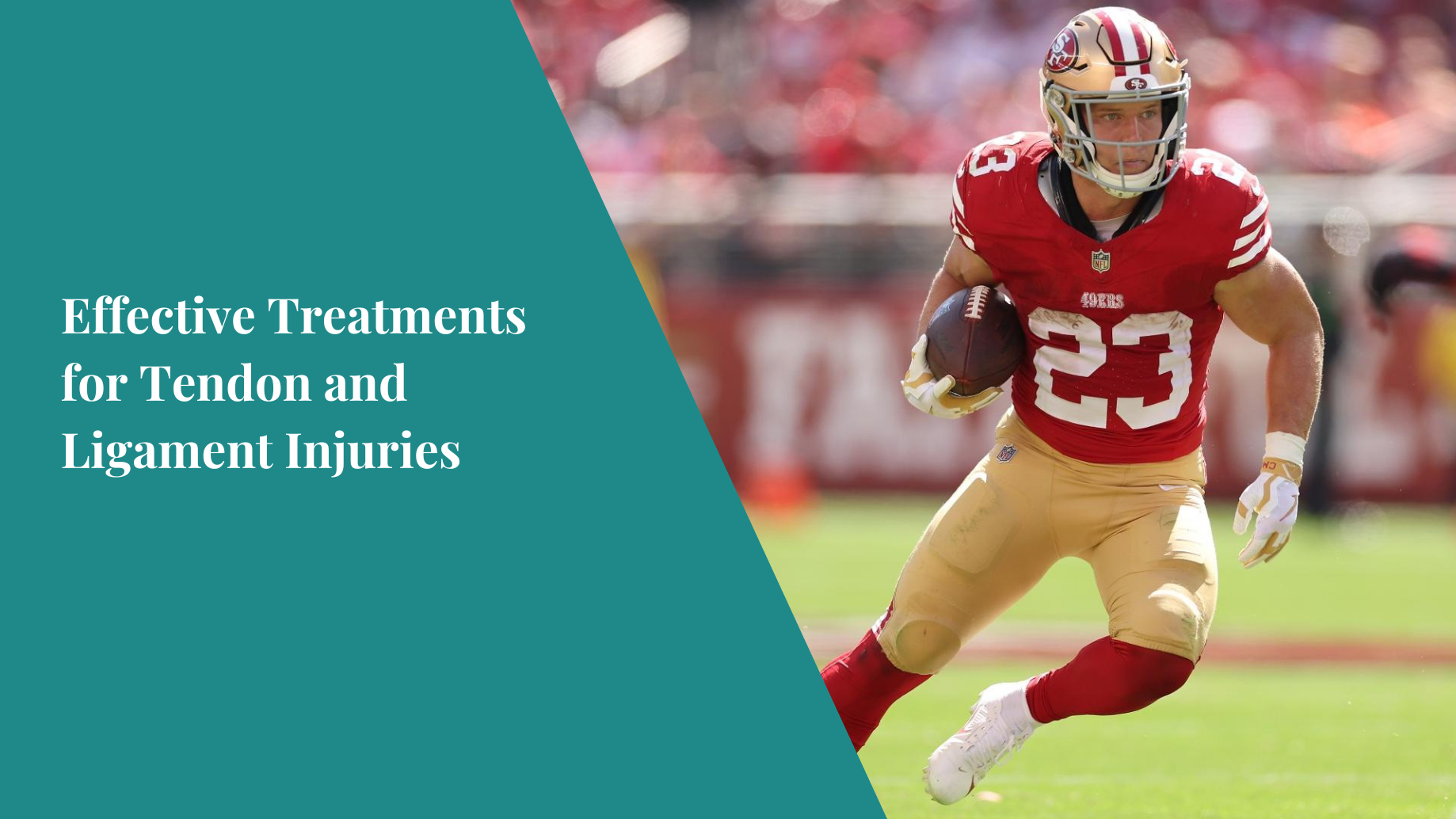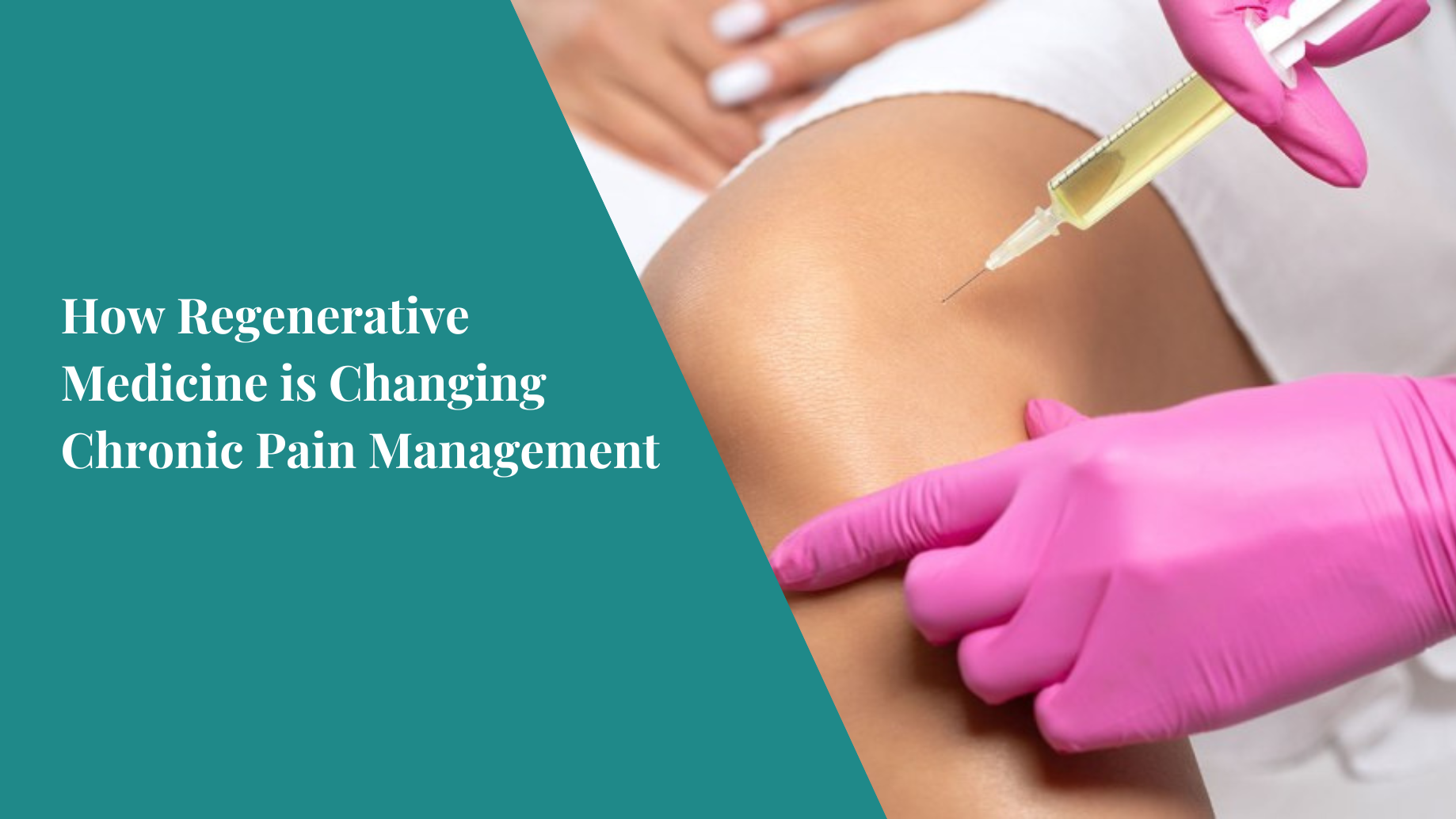Tendon and ligament injuries, such as Achilles tendonitis, tennis elbow, and rotator cuff strains, can…

What Are the Pros and Cons of PRP, Prolotherapy and Cell Therapy?
Musculoskeletal disorders can not only be painful. They can be difficult to treat.
And, these days, it seems like a lot of people are dealing with this problem.
According to the Centers for Disease Control and Prevention, more than 50 million adults visit the doctor’s office for chronic pain related to some musculoskeletal-related condition each year.
But, if you’ve been following our work for a while, you know that we specialize in finding healing solutions to these hard-to-treat conditions. You probably also know there is still a lot of controversy over the efficacy of non-traditional treatments for chronic pain, especially when they don’t involve surgery or pain medications.
The controversy stems from the fact that, for years, doctors have been using treatment options that mainly focus on cortisone injections, which can be destructive to soft tissues and joints over time. At that point, patients have no option but surgery.
In this blog post, we’d like to focus on regenerative medicine treatments and how they are used to treat all sorts of painful musculoskeletal disorders. We’re also going to take it a step further by giving you the pros and cons of the top treatments offered to patients dealing with this type of chronic pain. Our hope is that you are able to make an informed decision that leads to longterm pain relief.
What are the top non-surgical regenerative treatments offered to patients who are experiencing chronic pain?
If you do research on your own or you talk to a medical expert, you’re likely going to hear about dextrose prolotherapy, PRP (platelet-rich plasma), and cell therapy.
They are all considered regenerative medicine because, in some form or fashion, they all regenerate the body—meaning they can be used to re-grow new tissue to replace lost or injured tissue. Think about a crab that has lost its claw and how it is able to regenerate a new claw from its own body.
Regenerative medicine kinda works like that.
So let’s examine the benefits of each one of these treatments to see which one might work best for you.
Prolotherapy
Prolotherapy, the oldest and mildest of these treatments, involves the injection of an irritant (usually dextrose, which is a type of sugar) into the site of painful and degenerated tendons, joints and ligaments.
We usually give the injections during several treatment sessions to promote the growth of normal cells and tissues in your body.
The beauty of this treatment (besides it being all-natural) is that it dates back thousands of years to Hippocrates.
What does the research say?
There is more and more evidence in the scientific literature of the effectiveness of prolotherapy. We attempt to follow our patients for at least one year in order to monitor their success and discover great results.
We love to offer this treatment for early osteoarthritis and minor injuries. Prolotherapy is also used to treat the following pain conditions and injuries:
- lower back pain
- lateral epicondylosis
- tendon, muscle, and ligament problems
- arthritis of the shoulders, knees, hips, and fingers
- degenerative disc disease
- fibromyalgia
The good thing about prolotherapy treatments is that most patients feel the difference immediately after two sessions.
You’ll likely notice some swelling and stiffness, which is your body’s immune response. But most people can resume normal activities by the next day.
The cost? At our medical center, treatments start at $345.
PRP (Platelet Rich Plasma)
This treatment is a “step up” from prolotherapy.
With PRP, we’re able to use your own blood to help with healing cartilage, ligaments and partially torn tendons. We simply draw your blood in the office and get your platelets. These cells are not only important for preventing blood clots. They’re also the ones that allow you to heal.
Once platelets are in the area that’s being treated, they break down and release growth factors that help cells repair themselves and trigger your body’s healing.
What does the research say?
Out of all the regenerative medicine treatments, PRP injections are probably the most talked about because they’ve become popular with elite athletes.
There’s a good reason for that popularity.
A number of research studies have been produced since 2000, and the majority of them have found that PRP shows promise with treating damaged tendons and accelerating the healing process, especially when it comes to degenerative conditions such as osteoarthritis.
In one of the largest studies examining PRP, 230 patients with painful tennis elbow (lateral epicondylar tendinopathy) were treated with either PRP injections or traditional treatments. The results showed that nearly 84 percent of patients who received the PRP injections reported a significantly less amount of pain.
It’s important to note that all not all studies support the use of PRP in treating all chronic pain.
Still, PRP has been proven to be the most effective in numerous pain conditions and tendon injuries. Examples include:
- osteoarthritis
- rotator cuff Injuries and partial tears
- plantar fascia tears or related injuries
- tennis elbow
- knee meniscus tears
- lower back pain
- hip pain
Most patients begin to experience relief within three to four weeks following the second injection. The pain tends to improve over the next three to six months.
The cost? Because PRP injections are not covered by most medical insurers, there will be some out-of-pocket expenses. Injections at our center begin at $950.
Cell therapy
Now we’re getting into the most groundbreaking yet controversial type of treatment when it comes to regenerative medicine.
Cell therapy is the use of stem cells to treat or prevent a disease or condition. Stem cells have the potential to develop into any cell type in the body during the early stages of life and growth.
For example, if we place a stem cell in cartilage, it potentially can turn into brand new cartilage.
Mesenchymal stem cells (MSCs) are the major stem cells used for cell therapy.
What does the research say?
Researchers suggest that cell therapy injections have the potential to regenerate lost cartilage, stop and reverse cartilage degeneration, provide pain relief and improve patient mobility. The research is still early when it comes to using cell therapy to treat painful neurological and musculoskeletal conditions.
Our experience with cell therapy has involved using the patient’s stem cells, which are gathered from the patient’s bone marrow or amniotic stem cells.
Cell therapy is being studied to treat almost every condition you can imagine. These are just a few of the conditions:
- diabetes
- spinal cord injuries
- amyotrophic lateral sclerosis
- stroke
The cost? This procedure starts at $3,600, which is definitely the most expensive out of the three treatments we’re talking about today.
Final summary
Cell therapy is a potential game-changer in medicine.
We constantly keep an eye on the cell therapy studies, while studying the regenerative medicine results in our own practice.
But due to our success with PRP and Prolotherapy, early cell therapy scientific research, and cost, we reserve cell therapy for patients who are not prolotherapy or PRP candidates.
Here’s to knowledge!
Comments (4)
Comments are closed.




I have a daughter that was shot in the face and through the wrist during a dv. Was told she doesn’t have enough bone on the left side of the face to do implants where the teeth were blown out. Constant pain in mouth and wrist. Happened 3 years ago. Would prp or stem cell regrow bone in her face so she could get implants? She has a partial but does not fit properly and have to replace often. Would either of these treatments stop the pain in her face or hand?
Thank you
Sorry to hear about that unfortunate situation, but we can’t provide medical advice on this.
I appreciate that this post shared that one of the many benefits of PRP treatment is that it encourages collagen growth and speeds up our skin healing process. The other day my wife mentioned she is looking to have her acne scare reduced. Maybe she can consider looking at PRP treatment as a viable option.
Excellent information, I wonder to visit your blog, Thank you for sharing this informative blog.